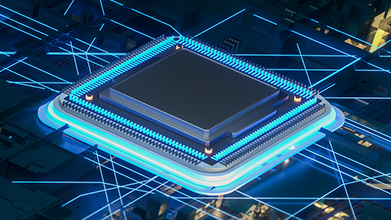Cloud native EDA tools & pre-optimized hardware platforms
Emerging technologies such as Internet of Things (IoT), 5G, Automotive, Artificial Intelligence (AI), and High-Performance Computing, have given rise to potentially transformative trends demanding the need for faster memory access. 5G brings with itself the ability for faster download and upload speeds, making high-speed real-time data transfer possible. All the fancy smartphone processors have inbuilt cutting-edge features like high resolution multimedia processing, faster Machine Learning (ML) computations, Image processing capabilities and faster frame rates for all you gaming freaks. But don’t forget underlying all this, is the need for faster memory, AI/ML requires higher bandwidth to support faster processing of massive data.
Guess what, LPDDR5 which is already catering the demand for low operating voltages, bandwidth and performance trends, got itself a new feather to support advanced future memory requirements JEDEC published new and updated standards for low power memory devices used in 5G and AI Applications. JESD209-5B includes both an update to the LPDDR5 standard that is focused on improving performance, power and flexibility, and a new LPDDR5X standard, which is an optional extension to LPDDR5. LPDDR5X memory (a dedicated type of DRAM for the CPU) will offer increased IO speed, larger die density, data bandwidth up to 8533 Mbps without any suggestive DRAM process upgradation and pre-emphasis feature. This blog will talk about the new features introduced in LPDDR5X, with increased data bandwidth while ensuring the integrity of data transfers.

Key Features introduced in LPDDR5X
- Bandwidth Extension: LPDDR5X supports higher bandwidth upto 8533Mbps, helping meet the market demand of UHD multimedia used in communications and strong machine learning computations.
- Pre-Emphasis Function: LPDDR5X offers a unique function where the transmitted signal gets pre-emphasized which compensates the transmission loss occurred. This in-turn helps perceive a better Signal-to-Noise Ratio (SNR) of the received signal. Pre-Emphasis increase the energy content of higher frequency signals thus improving the SNR & reducing the bit error rate which is essential for better cellular communication system.
- Per-Pin Decision Feedback Equalizer (DFE): To decrease the error rate during transmission for high-speed data communications, per-pin equalization technique is used to maintain the signal integrity. There is a separate control & update sequence to optimize training of data, thereby enhancing the robustness of the memory channel. This feature becomes vital in automotive, where slightest slip can be fatal.

Introduction of new features in LPDDR5X can help deliver enhanced solutions which are more powerful and can be used to drive applications like 5G, ML computation, Automated vehicles, Gaming etc. Synopsys is engaged with the early adopters of LPDDR5 VIP since 2016. For more information on Synopsys memory VIP, please visit http://synopsys.com/vip












